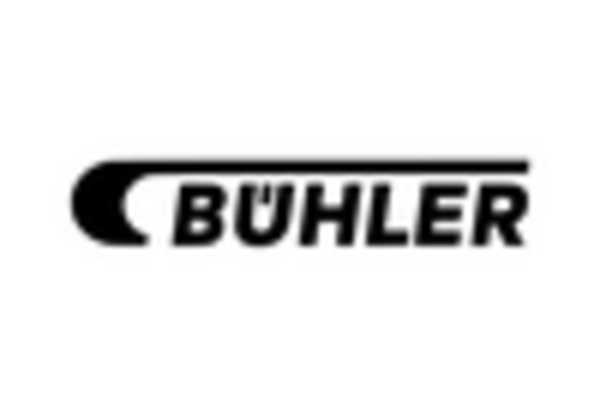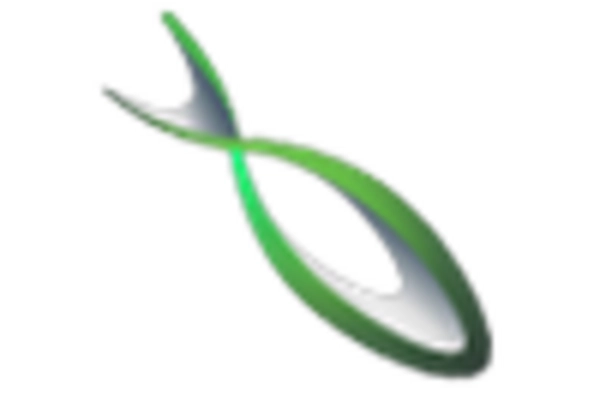Rising Demand for Processed Fruits
The increasing consumer preference for convenience foods is driving the demand for processed fruits, thereby influencing the Fruit Processing Equipment Market. As more consumers seek ready-to-eat options, manufacturers are compelled to invest in advanced processing equipment to meet this demand. According to recent data, the processed fruit segment is projected to grow at a compound annual growth rate of approximately 5.2% over the next five years. This trend indicates a robust market for fruit processing equipment, as companies strive to enhance production efficiency and product quality. The need for innovative processing solutions is likely to escalate, prompting investments in state-of-the-art machinery that can handle diverse fruit types and processing methods.
Expansion of Food Processing Sector
The expansion of the food processing sector is a crucial driver for the Fruit Processing Equipment Market. As the global population continues to grow, the demand for processed food products, including fruits, is expected to rise correspondingly. This trend is prompting food manufacturers to invest in advanced processing technologies to enhance their production capabilities. Recent statistics indicate that the food processing industry is projected to reach a market value of over 4 trillion by 2026, with fruit processing being a significant contributor. This growth presents substantial opportunities for equipment manufacturers, as they seek to provide innovative solutions that cater to the evolving needs of food processors.
Health Consciousness Among Consumers
The growing awareness of health and nutrition is significantly impacting the Fruit Processing Equipment Market. Consumers are increasingly opting for healthier snack options, which has led to a surge in the production of dried and frozen fruits. This shift in consumer behavior necessitates the adoption of specialized processing equipment that can preserve the nutritional value of fruits while enhancing their shelf life. Market data suggests that the demand for dried fruits is expected to rise by 6% annually, further driving the need for efficient processing technologies. As manufacturers adapt to these health trends, the equipment used in fruit processing must evolve to ensure that products meet consumer expectations for quality and health benefits.
Sustainability and Eco-Friendly Practices
Sustainability initiatives are increasingly influencing the Fruit Processing Equipment Market, as both consumers and manufacturers prioritize eco-friendly practices. The demand for sustainable processing methods is prompting companies to invest in equipment that minimizes waste and energy consumption. For example, equipment designed for energy efficiency can significantly reduce operational costs while meeting environmental regulations. Market trends suggest that the focus on sustainability is likely to grow, with a projected increase in demand for eco-friendly processing solutions by 8% over the next few years. This shift not only aligns with consumer preferences but also encourages manufacturers to adopt practices that contribute to a more sustainable food supply chain.
Technological Innovations in Processing Equipment
Technological advancements are reshaping the Fruit Processing Equipment Market, as new innovations enhance processing efficiency and product quality. The introduction of automation and smart technologies allows manufacturers to optimize production processes, reduce waste, and improve overall operational efficiency. For instance, the integration of IoT devices in processing equipment enables real-time monitoring and data analysis, which can lead to better decision-making and resource management. Market analysis indicates that the adoption of automated processing solutions is likely to increase by 7% over the next few years, reflecting a strong trend towards modernization in the industry. This technological evolution not only boosts productivity but also aligns with the growing demand for high-quality processed fruit products.

















Leave a Comment